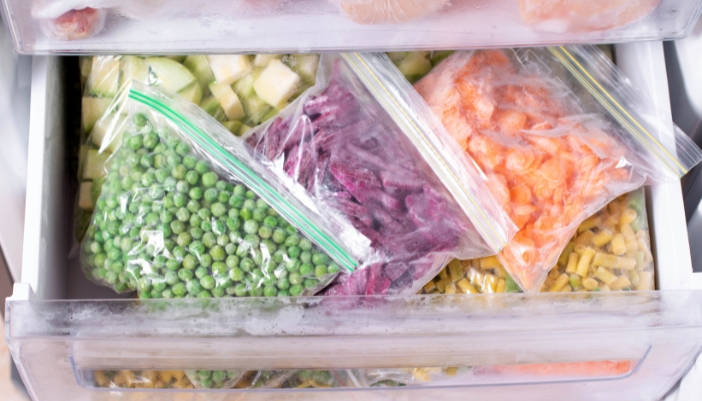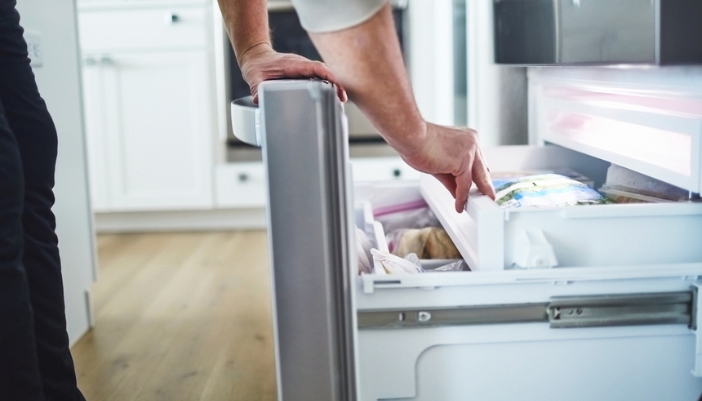Freezing is a fantastic way to preserve the freshness and flavor of your favorite foods, but it's not without its pitfalls — one of the most common being freezer burn. Those white patches of ice crystals not only make your food look less appealing but can also affect its taste and texture.
Whether you're a meal prep enthusiast or just trying to keep your freezer stocked, understanding freezer burn is crucial. We at Dick Cooper TV & Appliance are here to guide you through what freezer burn is, how it affects your food, and most importantly, how to prevent and deal with it effectively!

What is Freezer Burn?
Have you ever pulled a steak or a bag of veggies out of the freezer only to find them covered in ice crystals and discolored patches? That unwelcome visitor is freezer burn, and it's caused when moisture in the outer layers of the frozen food evaporates and leaves behind dry spots that are tough and lack flavor.
When food is exposed to the air in the freezer, the water molecules migrate to the coldest place, typically the freezer's interior, which then leads to the food's surface. These surface areas become dry and leathery, leaving the food tough and often lacking flavor. However, you don't have to be stuck with freezer burn and its effects--there are ways around it!
Did You Know? Despite the name, it's not an actual burn, but the process of dehydration and oxidation that can happen when food is improperly packaged or stored too long.
Effects of Freezer Burn
While freezer burn might make your food look less inviting, the good news is it doesn't make the food unsafe to eat. However, the quality of your food takes a hit in several ways:
- Taste and Texture: Food becomes dry and tough, losing its pleasant texture and flavor. Aromatic compounds that enhance taste may also degrade.
- Nutritional Value: Essential vitamins such as vitamin C and some B vitamins can diminish, slightly lowering the nutritional benefit of frozen foods.
- Appearance: Freezer burn can cause unsightly white or grayish-brown leathery spots, making food less appetizing and potentially increasing food waste.
Common Causes of Freezer Burn
To effectively prevent freezer burn, it's essential to know what causes it. Here are the main factors that contribute to this condition:
- Improper Packaging: The biggest culprit is exposure to air. If food is not sealed correctly in air-tight packaging, moisture can escape and air can seep in, leading to freezer burn.
- Temperature Fluctuations: Frequent changes in temperature, such as those caused by frequent opening and closing of the freezer door, can increase the risk of freezer burn. This happens because the ice crystals that form on the food can melt and refreeze, which accelerates moisture loss.
- Extended Storage: The longer food is stored in the freezer, the higher the likelihood of developing freezer burn. Even with optimal packaging and stable temperatures, prolonged storage can eventually lead to quality degradation.

Preventing Freezer Burn
Want to keep your frozen foods tasting as good as the day you stored them? Preventing freezer burn is key to maintaining freshness and quality. Here's how to shield your food from those frosty foes:
- Proper Packaging: Wrap it right using airtight containers, heavy-duty freezer bags, or tight layers of aluminum foil or plastic wrap. The goal? Get rid of as much air as possible before sealing.
- Vacuum Sealing: Planning to freeze food for the long haul? A vacuum sealer can be a game changer, sucking out all the air and forming a super shield against freezer burn.
- Regular Temperature Checks: Set your freezer to a steady 0°F (-18°C) to keep the chill consistent. A thermometer can help you keep an eye on things without guessing.
- Organize Your Freezer: Know where everything is and keep it accessible. This helps you grab what you need quickly without letting out too much cold air.
- Freeze in Small Portions: Smaller portions freeze and thaw more quickly, reducing risk and exposure to air. This little trick can go a long way in fighting freezer burn.
- Label and Rotate: Date and label your foods to keep track of how long they've been frozen. Use the oldest items first to cut down on long-term storage risks.
How to Deal with Freezer Burn
Even with the best preventive measures, freezer burn can still occur. If you find yourself facing this frosty dilemma, here are some ways to manage and possibly salvage affected food:
- Trim Away the Burn: For meats and other solid foods, cut off the freezer-burned areas before cooking. These sections tend to be dry and flavorless, so removing them helps improve the overall taste and texture of your dish.
- Cook Creatively: Freezer-burned vegetables and fruits might not be ideal for raw consumption, but they can still shine in cooked dishes. Think soups, stews, or smoothies where texture and subtle flavor shifts are less noticeable.
- Use Marinades and Sauces: Freezer-burned meats can benefit from a good marinade or a robust sauce. These can help reintroduce moisture and flavor, masking any dryness or blandness caused by freezer burn.
- Reconsider Before Discarding: If the freezer burn is extensive, consider if the food is still worth using. While safety isn’t typically an issue, severely freezer-burned food might not provide a pleasant eating experience.

Freeze with Ease
Rather than letting freezer burn become a regular part of your frozen food experience, equip yourself with the know-how to prevent and address it effectively. Not all freezers are created equal, and upgrading to a more efficient model could be your best defense against freezer burn. Consider exploring the latest freezer models at Dick Cooper TV & Appliance to find one that fits your lifestyle and enhances your food preservation efforts. With the right freezer and a few smart techniques, you can master the art of freezing and enjoy your meals just as they were meant to be! Not sure what freezer is right for you? Ask us, we’re the experts, and always ready to help!